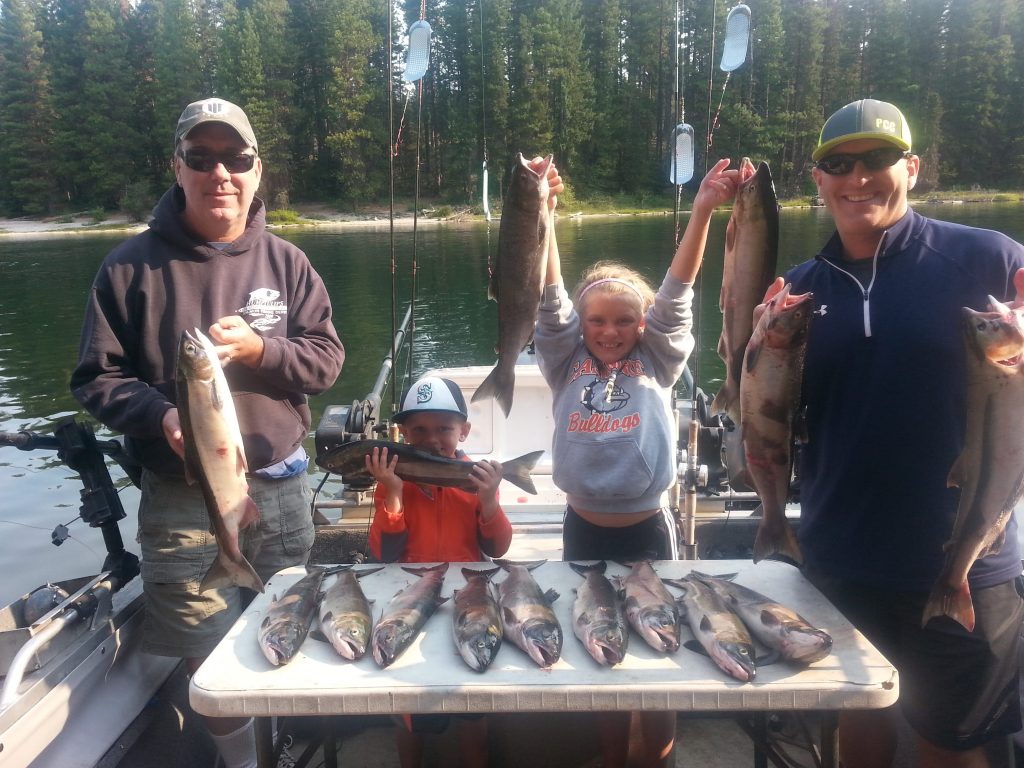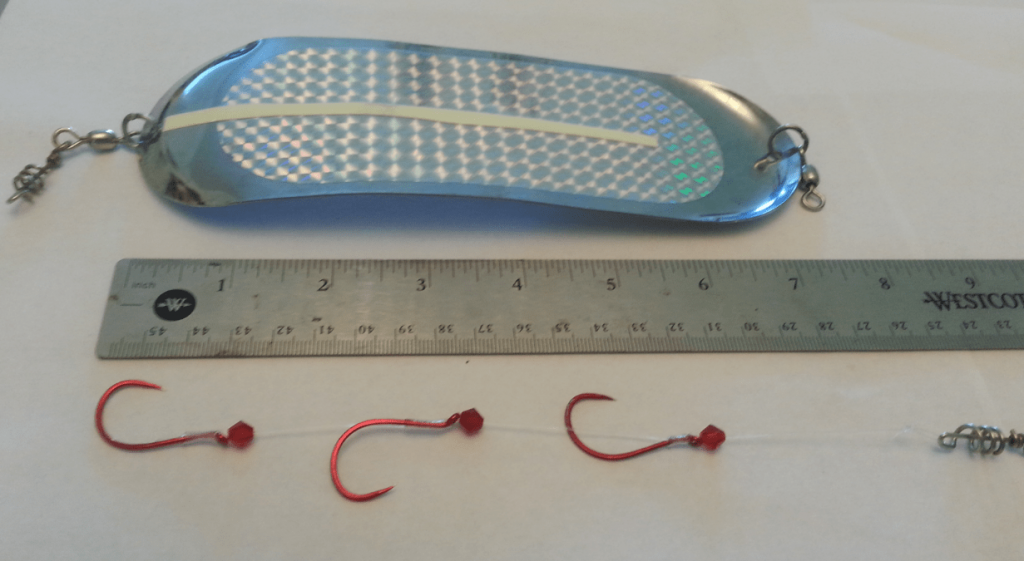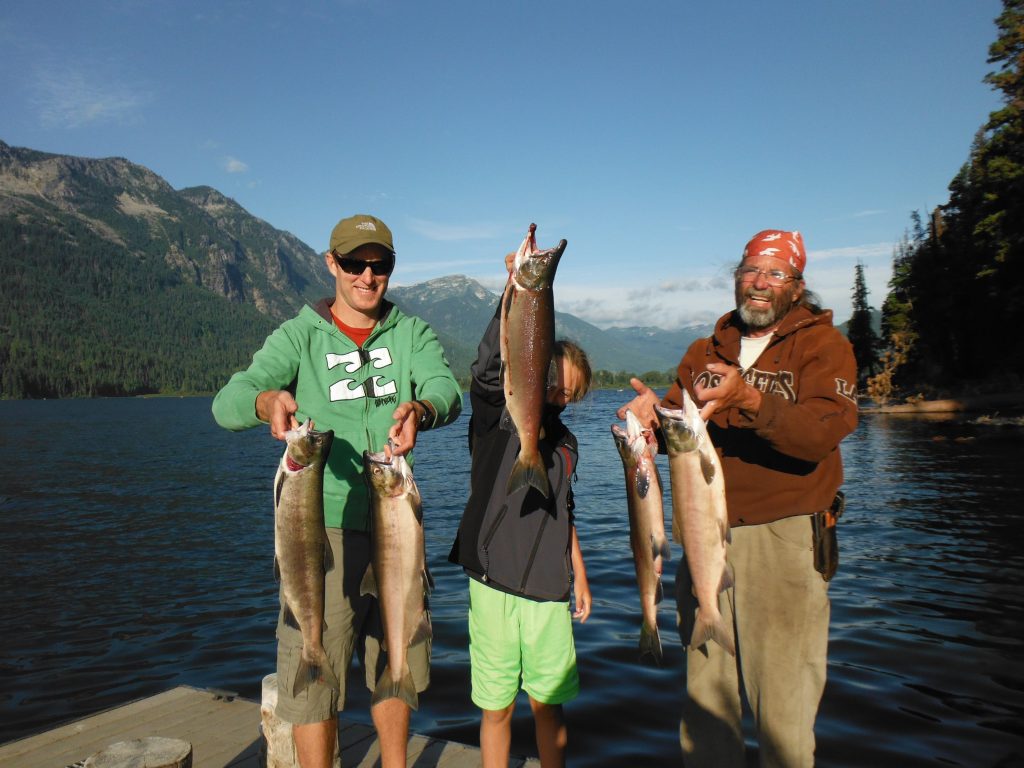
From The Vault: The Lowdown On The Lake Wenatchee Sockeye Slowdown
Editor’s notes: The following article appeared in the August 2015 issue of Northwest Sportsman magazine and was written by Don Talbot. This year’s season opens Aug. 3 with a limit of four. Here is more on the regulations.
August is the month for sockeye fishing at Lake Wenatchee. I have been actively participating in this fishery for over 20 years and can say that the techniques have improved dramatically over the past decade.

When I started fishing the Chelan County lake for its red salmon, the secret was to put the leader back 30 feet behind the downrigger ball and use a size “0” dodger with two Gamakatsu 2/0 octopus red hooks tied about an inch apart on 12-pound Maxima line. (Well, secret might be an overstatement as the set-up was very similar to the Lake Washington sockeye rig.) The overall leader length was 18 inches and the boat speed was about 1.2 to 1.5 mph. The bite was over by 9 a.m. and you were lucky to pull any fish afterwards. The typical rod used by anglers was an Ugly Stick that could take a 16-ounce railroad spike as a weight.
One afternoon about 10 years ago I was fishing the west end of the lake with my brother Jim when another boat came our way to check out the fishery. They had never fished Lake Wenatchee for sockeye and asked me how deep we were. I told them that I was marking fish between 60 and 80 feet, but couldn’t get them to bite. They said thank you and proceeded to catch their limit in less than an hour.

I knew that they were professional fishermen from the other side of the mountains and needed to get some information from them. I ran up to their boat after they’d pulled their last fish in and offered to take them out to dinner at the 59er Diner at the US 2-Highway 207 intersection in nearby Coles Corner. They accepted my invitation and I proceeded to grill them on what we’d been doing wrong.
They laughed at us and said that everyone was using too long of a leader and their troll speed was too high. I asked how long their leader was, and they laughed again and said no longer than the length of their dodger, a size “0,” which measures 8 inches long. When I said “no way,” they took me to their boat and pulled out rods with dodgers still attached. The leader was 8 inches overall. I then asked how fast they’d been going, to which they told me 1.0 to 1.3 mph.
The next morning we caught 24 fish using their techniques and thought that we had mastered the sport.
But it took nine more years of playing around to figure out a way to catch almost twice as many fish in less time.
IF YOU UNDERSTAND THE concept of “maximum action at the slowest trolling speed” after you read this article, then you will know the secret to never having another bad day out on sockeye waters. What follows is the ultimate formula to having more fun fishing for the red-coated and red-meated salmon with ultralight rods and reels at Lake Wenatchee. Heck, it might even work over on Lake Washington, if they open it back up again.
Let’s start with rods and reels. I use kokanee rods for sockeye fishing and they work fantastic for this fishery. I have four 8-foot TICA Kokanee rods connected to four TICA Kokanee reels that I use at Lake Chelan to catch landlocked sockeye. I fill each reel with 30-pound SpiderWire and top it off with 20-pound Seaguar fluorocarbon leader. You will not believe this, but I only use 4 feet of leader material; I will explain why later. I attach a nice 100-pound swivel to the end of the leader, and the rod is ready for action.
The dodger is the exact same one as was used 20 years ago, except that I bend it into a banana shape (as shown in the picture on the previous page) to get a ¾-inch overall arc. I use three 2/0 barbless Gamakatsu red hooks tied about ¾ inch apart, and my actual leader length is as short as I physically can tie the loop on the end, as shown on the preceeding page. I use 20-pound Seaguar Fluorocarbon to tie all my hook leaders.
Why bend the dodger into a banana shape? The idea is to get maximum hook action at the slowest trolling speed. My trolling speed now is a solid .8 mph on my GPS.


Why fish only 4 feet behind the downrigger ball on a clip that is attached to the downrigger line right above the ball? Brad’s makes a ton of wobblers for attracting salmon to bite. I thought I would try using these wobblers as downrigger ball teasers to attract more sockeye. I attached three of these wobblers on last year’s opener and we landed 28 sockeye in about half a day of fishing. We wanted to see how close we could fish to the teasers and figured that 4 feet was a really good distance to try. The teasers made a huge difference in attracting schools of sockeye to the strike area.

HERE ARE SEVEN GREAT reasons to try out my methods and sockeye fishing gear to get maximum action at the slowest trolling speed:
- Light-action kokanee clips work great at .8 mph with a size 0 dodger;
- 4 feet behind the ball means you will get zero tangle-ups while trolling;
- Extra teasers means that you will attract more fish to your set-ups;
- Going .8 mph means that you will be in the strike zone longer as you go through a school of sockeye;
- Short leaders mean that the fish will not be able to see the hooks clearly, which in turns means more strikes;
- Light-action kokanee rods mean a ton more fun catching fish;
- Three times the strike action means that you can buy a bigger boat to limit more people.
THESE ARE THE BIGGEST changes sockeye fishing has experienced in the past 20 years. It is time that you get out and try all these tricks to see how effective you can become out on the water at Lake Wenatchee. I can confidently catch fish any hour of the day here. The morning hours are still prime time, but I had several 20-fish days after 9 a.m. last season using the new techniques.
The greatest thrill in fishing for me is discovering a new technique and sharing it with the rest of the fishing community that is willing to listen. This is the time to apply the “maximum action at the slowest troll speed” with the maximum teaser attraction. Enjoy your massive catches out on the water.

